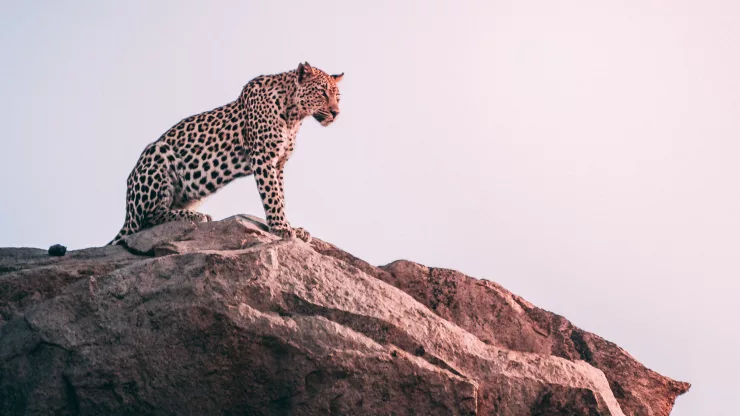Urban Wildlife Rescue: Behind the Scenes of Wildlife Rehabilitation
Wildlife rehabilitation is a vital aspect of conservation efforts, especially in urban areas where human-wildlife conflicts are prevalent.
Wildlife rehabilitation centers play a crucial role in providing emergency care and treatment to injured, sick, or orphaned animals.
In this article, we’ll explore the process of wildlife rehabilitation, the challenges faced by urban wildlife rescuers, and the importance of their work in preserving ecosystems.
Jump to Section
Introduction
Urbanization has led to the displacement of many wild animals from their natural habitats, causing an increase in human-wildlife conflicts.
This has resulted in an urgent need for wildlife rehabilitation centers to provide care for injured, sick, or orphaned animals.
Urban Wildlife Rescue: Behind the Scenes of Wildlife Rehabilitation
Introduction
Understanding the Importance of Wildlife Rehabilitation
Wildlife rehabilitation aims to provide care and treatment to injured, sick, or orphaned animals with the goal of releasing them back into their natural habitats.
This is important in preserving ecosystems and maintaining biodiversity.
What is Urban Wildlife Rescue?
Urban Wildlife Rescue is the process of rescuing, rehabilitating, and releasing animals that are affected by urbanization.
This includes animals that have been injured due to collisions with vehicles or buildings, electrocutions, or those that have been orphaned due to habitat loss and fragmentation.
The Wildlife Rehabilitation Process
Wildlife rehabilitation centers follow a standard process when rehabilitating animals. The process includes:
Initial Assessment and Stabilization
Upon arrival at the rehabilitation center, the animal is assessed to determine the extent of the injury or illness.
The animal is then stabilized to prevent further harm or stress.
Medical Treatment and Care
The animal is given medical treatment and care based on the assessment. Treatment may include medication, surgery, or physical therapy.
Nutritional Support and Rehabilitation
The animal is provided with appropriate food and nutrition to aid in recovery. The animal is also given an appropriate environment to encourage physical activity and natural behaviors.
Pre-Release Conditioning
The animal is conditioned for release back into the wild.
This includes training the animal to hunt and forage for food, and ensuring that the animal is physically fit to survive in the wild.
Challenges in Urban Wildlife Rescue
Human-Wildlife Conflicts
Urbanization has led to an increase in human-wildlife conflicts. Wildlife rescuers face challenges in rescuing animals that are in dangerous situations.
Habitat Loss and Fragmentation
Habitat loss and fragmentation due to urbanization have resulted in animals being displaced from their natural habitats.
This has led to an increase in orphaned animals that need rehabilitation.
Disease Outbreaks
Disease outbreaks can spread rapidly in urban areas, affecting both humans and animals. Wildlife rescuers face challenges in preventing the spread of diseases among animals in their care.
The Role of Wildlife Rehabilitation Centers
Providing Emergency Care and Treatment
Wildlife rehabilitation centers provide emergency care and treatment to injured, sick, or orphaned animals.
They also provide a safe environment for animals to recover before being released back into the wild.
Education and Outreach Programs
Wildlife rehabilitation centers educate the public on the importance of wildlife conservation and how to prevent human-wildlife conflicts.
They also provide outreach programs to schools and communities.
Research and Conservation Efforts
Wildlife rehabilitation centers contribute to research and conservation efforts by collecting data on wildlife populations, monitoring the success of rehabilitation efforts, and promoting conservation awareness.
Behind the Scenes of Wildlife Rehabilitation
The Daily Routine of a Wildlife Rehabilitator
Wildlife rehabilitators have a busy daily routine that includes feeding, administering medication, cleaning enclosures, and providing enrichment activities for animals.
The Importance of Volunteer Work
Volunteers play a crucial role in wildlife rehabilitation centers. They assist in caring for animals, cleaning enclosures, and providing support to the staff.
The Future of Urban Wildlife Rescue
Urbanization is not slowing down, which means that the need for wildlife rehabilitation centers will continue to increase.
It is important that we continue to support these centers to ensure the preservation of our ecosystems.
Conclusion
Our Responsibility to Protect Urban Wildlife
It is our responsibility to protect urban wildlife by preventing human-wildlife conflicts and supporting wildlife rehabilitation efforts.
How You Can Help Wildlife Rehabilitation Efforts
You can help wildlife rehabilitation efforts by volunteering at a wildlife rehabilitation center, donating to support their work, and educating others on the importance of wildlife conservation.
The Impact of Urban Wildlife Rescue on Ecosystems
Urban wildlife rescue has a positive impact on ecosystems by preserving biodiversity and promoting conservation awareness.
FAQ
What should I do if I find an injured or orphaned animal?
If you find an injured or orphaned animal, contact your local wildlife rehabilitation center immediately. Do not attempt to care for the animal yourself.
How can I prevent human-wildlife conflicts?
You can prevent human-wildlife conflicts by securing your garbage and compost, keeping pet food inside, and not feeding wildlife.
How can I support wildlife rehabilitation efforts?
You can support wildlife rehabilitation efforts by volunteering at a wildlife rehabilitation center, donating to support their work, and educating others on the importance of wildlife conservation.
I’m a nature enthusiast and creator of Metro Wilds and have spent years exploring the great outdoors.
With a passion for environmental conservation and sustainability, I have dedicated my career to writing about the beauty and wonders of nature, as well as the threats facing our planet.
Contact me at [email protected] for assistance.





